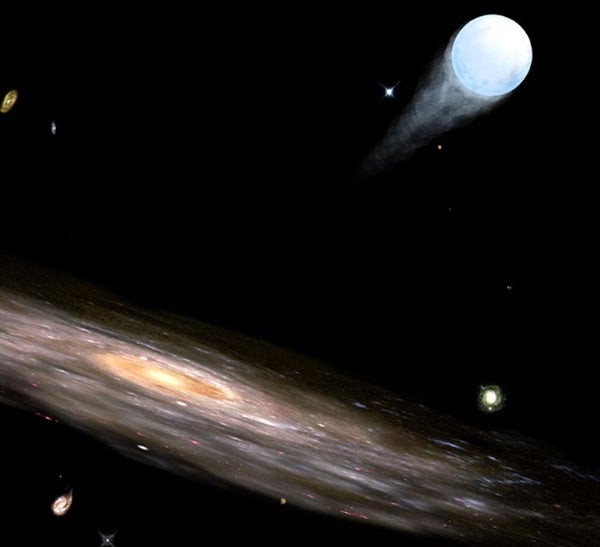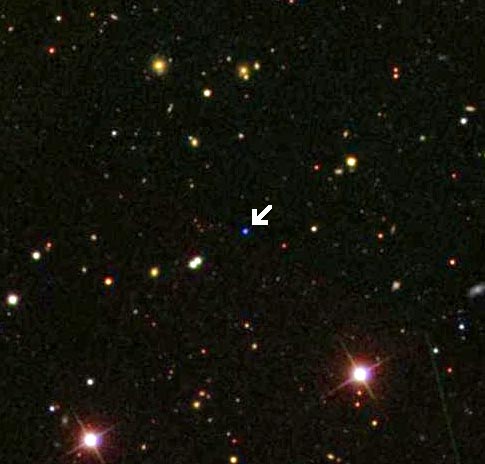Stellar exiles make up a new class of stars — those leaving the Milky Way — says astronomer Warren Brown of the Harvard-Smithsonian Center for Astrophysics (CfA).
Brown and colleagues discovered the first castaway in 2005, and they suspect as many as 1,000 such stars exist among the Milky Way’s 100 billion.
Astronomers theorize that stellar exiles began their lives as binary star systems near the Milky Way’s galactic center. “Computer models show that hypervelocity stars are naturally made near the galactic center,” says CfA theorist Avi Loeb. He adds, “We know the galactic center holds a supermassive black hole. So, exiled stars inevitably will be produced when binaries pass too close to the black hole.” In this scenario, one star is captured by the black hole’s gravity, while the other is hurled outward at an astounding speed — in excess of 1 million mph.
The first newly discovered exile has the mass of about 4 Suns, is some 240,000 light-years distant, and travels at about 1.25 million mph (2.01 million km/hr). The second castaway, also about 4 solar masses, is some 180,000 light-years away from Earth and is moving out of the galaxy at about 1.43 million mph (2.30 million km/hr). Exiting the Milky Way at hypervelocity, these stars are moving fast enough to escape our galaxy’s gravitational grasp.
Stellar ejections happen rarely — about one every 100,000 years, astronomers estimate. To date, a total of five stellar exiles have been found; three by Brown and his colleagues and two by European groups.











